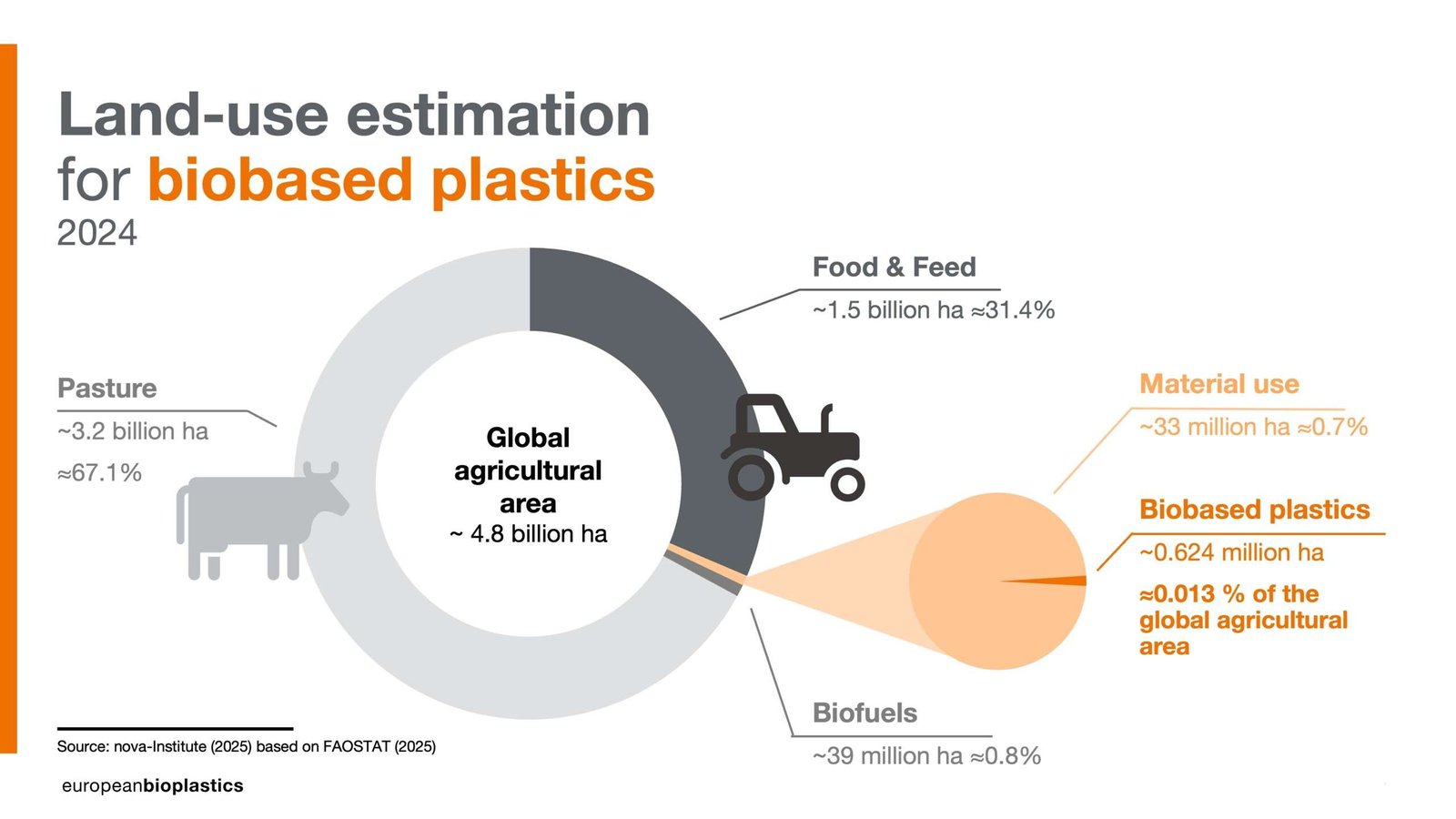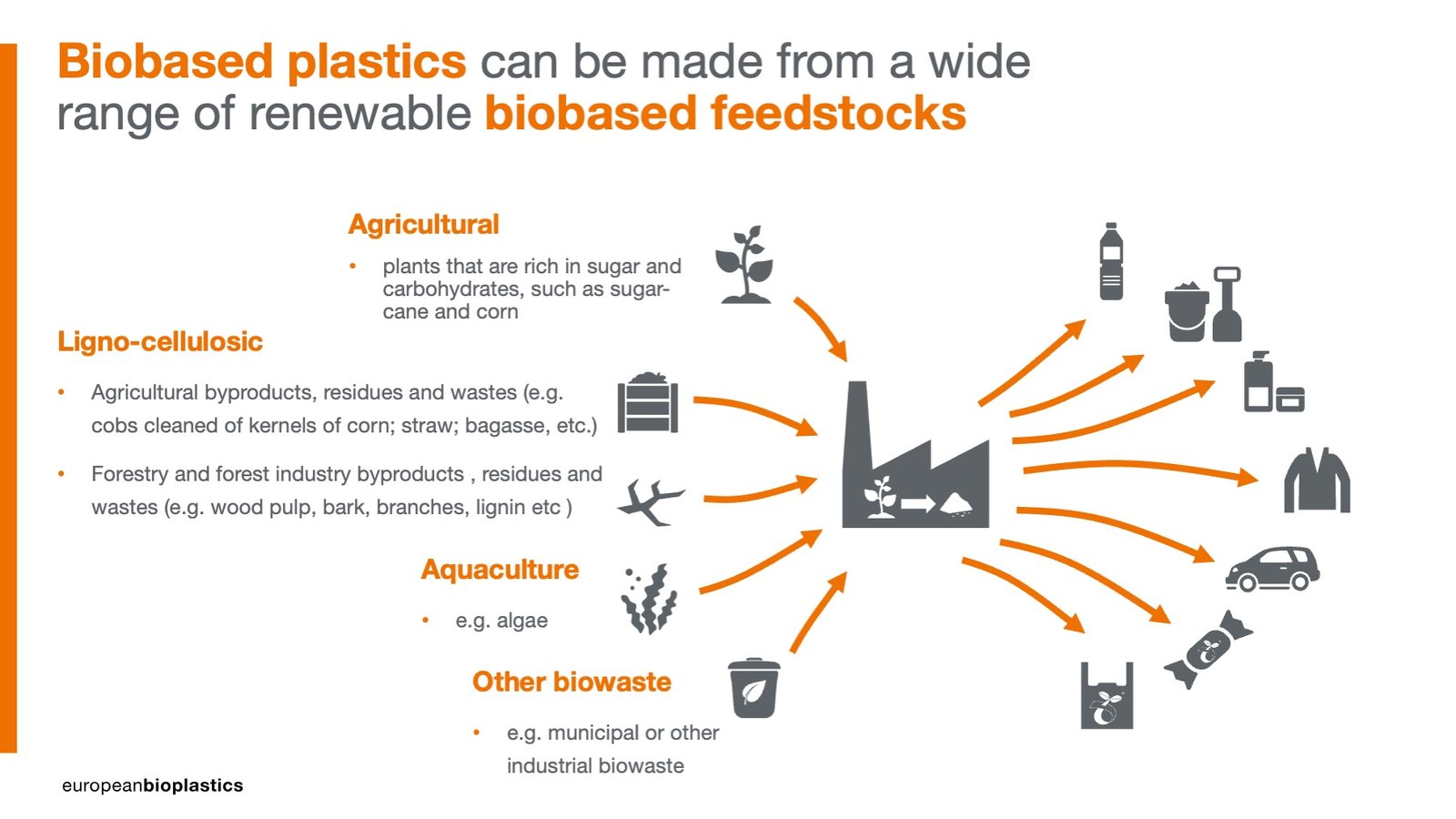To meet the EU’s climate neutrality target by 2050, a transition from fossil-based to biobased materials is essential. A key player in this shift is the bioplastics industry, which leverages agricultural biomass, such as corn, wheat, and sugar beet, to create sustainable alternatives to traditional plastics.
The use of biobased feedstocks for material production reduces the dependency on fossil resources and lowers greenhouse gas emissions, supporting the goals of the European Green Deal and the circular bioeconomy.
Why Agricultural Biomass?
Using crops for biobased plastics offers several advantages including:
- High relative land-use efficiency
- Fast renewability
- Cost-effectiveness and availability
- Compatibility with regenerative agriculture
Despite common misconceptions, the use of crops for materials does not compete with food production. In fact, it can enhance food security by boosting land productivity, stabilising markets, and supporting farmer incomes.

Today, bioplastics account for just 0.013% of global agricultural land. Yet they play a vital role in reducing carbon emissions and creating high-value biobased solutions.
Looking Beyond Food Crops

The bioplastics industry is also scaling up its use of alternative feedstocks, including:
- Agricultural and forestry residues (e.g., straw, bark, lignin)
- Algae
- Biowaste from industrial and municipal sources
Call for a Level Playing Field
European Bioplastics (EUBP) advocates for policy frameworks that treat biobased materials equally to bioenergy. Currently, the bioenergy sector benefits from stronger incentives, while bioplastics face regulatory gaps.
To support a truly circular and climate-friendly economy, EUBP calls for:
- Harmonised sustainability criteria for biomass use
- Equal incentives for all bioeconomy sectors
- Implementation of the cascading use principle, prioritising material uses of biomass over energy use
Agricultural biomass is not just a raw material; it’s a pathway to a more sustainable future. With supportive policies and market development, biobased plastics can help Europe build a resilient, low-carbon and circular economy.














